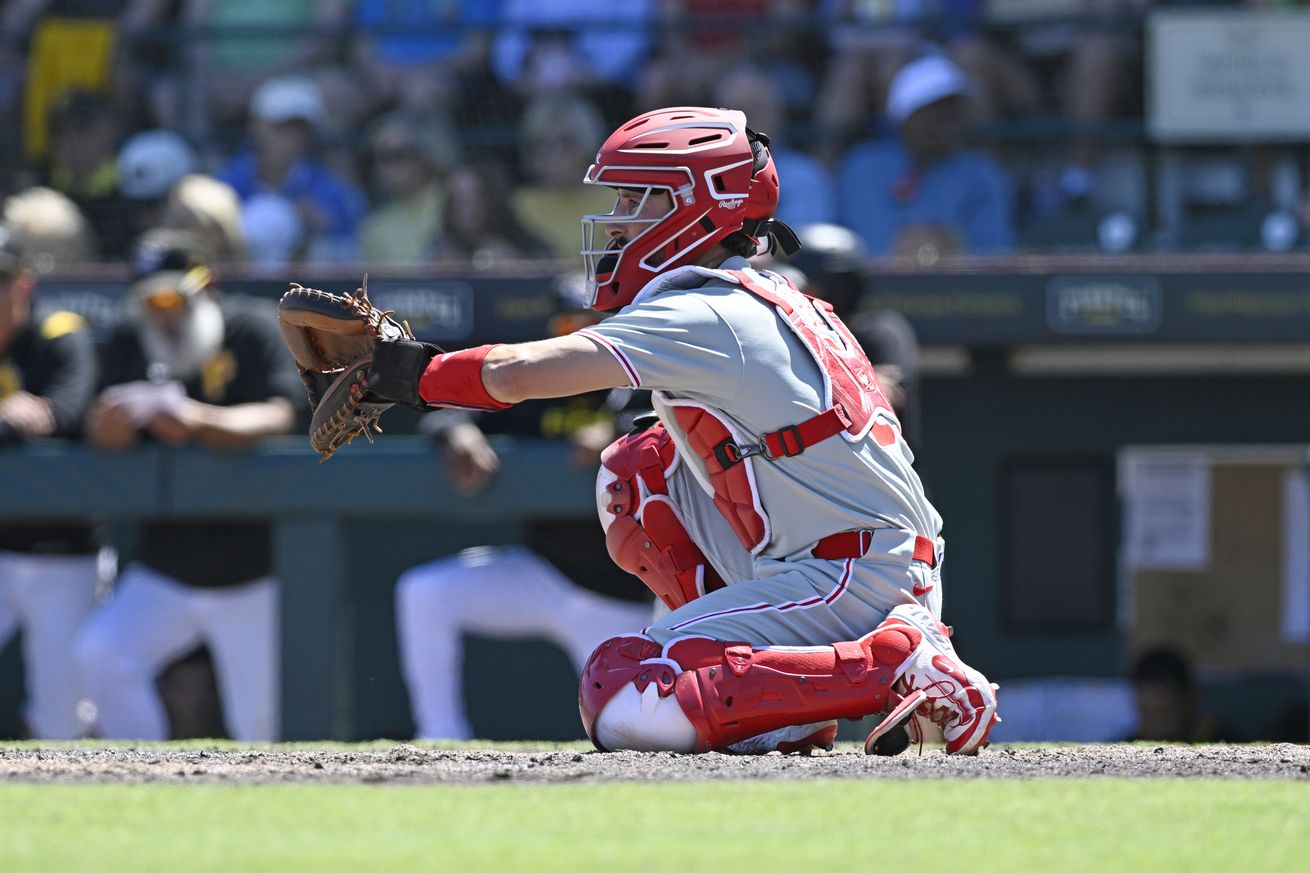
He’s still helping the team
Last week, I wrote about the backup catching spot for the Phillies right now and Rafael Marchan has disappointed in the position. There is no inkling of a change that is imminent as the number of data points for Marchan is far too small, However, Friday night’s start with Aaron Nola on the mound added a bit of fuel to the fire as well. As we noted, the bare minimum for a backup catcher is be decent defensively and there has been some evidence that when Marchan is behind the mound, the pitchers struggle. If we focus on Nola alone for this season, the difference between when Marchan catches him and when J.T. Realmuto catches him is rather stark.

There should be a few disclaimers to this. One again being that it is still quite the small sample size of data available and conclusions need not to be jumped to. Second is that catching only one game a week will be difficult on any player, particularly a young one like Marchan that doesn’t know the opposition as well as Realmuto does. It’s not really a stretch to say that he hasn’t been good, but as we said last week, the status quo is likely to remain in place.
There is the depth argument to not making a change, again as we said before. The team should always look to preserve depth if roster and player contract rules allow. Keeping Garrett Stubbs, the obvious change the team could make with Marchan, in Lehigh Valley preserves that depth. Yet now, there is a more important job for Stubbs, one that the team is likely happy he has undertaken: getting Andrew Painter ready for the majors.
Matt Gelb wrote a good story the other day about Painter’s move to Lehigh Valley, the final step in his journey to becoming a major league pitcher. In it, there were quotes from Stubbs, the catcher that has been tasked with making sure that Painter is ready to make the last leap to Philadelphia.
“Before the game,” Stubbs said, “I told him, ‘Look, there’s going to be at least one time during this game where something doesn’t go the way that we want it to. … Something’s going to happen and you’re going to have to be a man and be a competitor and figure your way out of it. And so that moment happened.”
It’s clear that the team has included Stubbs in the process as a point of intention. While in the majors, Stubbs was more of a defensive minded catcher and it showed when the pitching staff demonstrated comfort with him behind the plate. Hoping that defensive excellence would carry over is possibly part of the equation as to why Stubbs is there now.
Stubbs, considered a strong pitch caller, will be Painter’s professor at Triple A. He still called a bunch of fastballs — 45 percent of the time — and the advanced stuff won’t come until Painter’s second or third start with the IronPigs. In Stubbs’ mind, Painter has to be a part of the process. See how hitters react. Learn what works here. Learn what does not.
The parallels to the movie “Bull Durham” are obvious and appropriate. Tasked with bringing the team’s prized pitching prospect under control, Kevin Costner’s character of Crash Davis was supposed to make sure that Ebby Calvin “Nuke” LaLoosh had his head screwed on straight before he was allowed to throw a major league pitch. With Stubbs, he’s not messing someone who has the personality of LaLoosh. He’s instead trying to make sure that Painter is treating games in Lehigh Valley similarly to if he were making starts in Philadelphia. It helps to have a veteran catcher like that to help Painter do so, particularly one like Stubbs that knows what the big league coaching staff expects out of their starters.
In the end, Andrew Painter will be the one to dictate when he is ready. The responsibility of being prepared rests on the shoulders of the one who has to make the pitches. Painter is well equipped to do so with his array of pitches that grade out as plus or higher on the scouting scale.
It helps to have a catcher with MLB experience guiding him along.